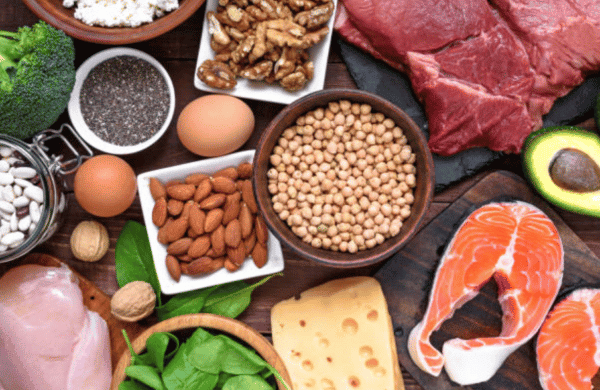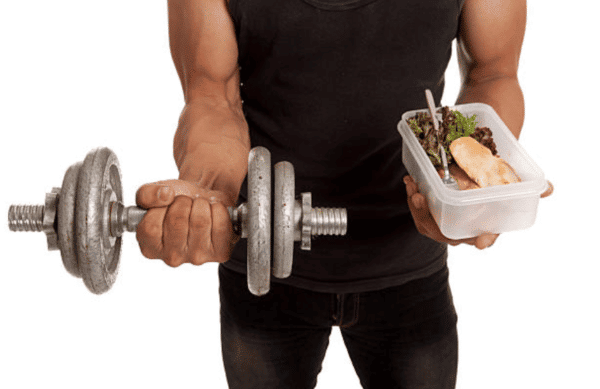From time immemorial, there has always been a certain interest in food that nutritionists and other dieticians have shown. They try to justify by showing a role not only in the process of cellular reconstitution, but also for the preservation of the immune system. Thus, several recommendations are made in this sense to promote a healthy lifestyle and allow you to be in shape. Healthy eating and balanced would be an invaluable source of benefits for the body. For top athletes and bodybuilders, it even appears vital for obvious reasons related to the energy expenditure induced by their activities. What about the paleo diet?
To this end, the various diet programs that have been developed such as the Paleolithic diet offer bodybuilding enthusiasts several avenues. These allow to progressively achieve a significant loss of weight following a sufficient gain of mass. Let's see in detail this subject.
The history of the Paleolithic diet
This diet takes its name from the longest period of prehistory: the Paleolithic. At that time, men lived mainly by hunting and gathering. Thus, the Paleolithic diet is a slimming diet that reproduces in its main components the Paleolithic way of life.
In short, the proponents of the paleo diet believe that the nutritional needs of today's humans differ little from those of humans at that time in history. According to them, most of the foodstuffs produced during the Neolithic revolution (agriculture and animal husbandry) are at the root of a certain number of observed dysfunctions. And this, at the level of the organism: obesity, heart disease, diabetes, etc.
Under these conditions, the return to a diet composed mainly of lean meat (game, poultry, ruminants), fish, roots, nuts and berries is logical to say the least. This essentially proteinic diet would favour, among other things, a better absorption of food by the body.
How does the paleo diet work?
To promote a consistent loss of weight, athletes and bodybuilding enthusiasts must fully integrate the operating principle of the paleo diet. It is indeed a high-protein diet, rich in animal proteins and low in carbohydrates. As a result, the consumption of cereals is reduced or even totally banned. In concrete terms, a Paleolithic-type diet is geared towards promoting natural products to the detriment of products that have undergone agricultural or industrial processing.
Thus, it is the restriction observed with regard to the consumption of starchy and processed foods that is the basis of the weight loss that occurs initially. This caloric deficit will be filled by the consumption of fruits and vegetables, animal proteins. (especially rich in saturated fatty acids). But also fibres from plants (dietary fibres). Also, the intake ofoilseeds (omega-3) and unprocessed vegetable oils is favourable to the prevention of cardiovascular diseases.
Moreover, for the positive effects to be truly felt in the body after a certain period of time, this diet must be practiced over the long term or even for life.
List of permitted foods
Foods that are allowed on a paleo diet are:
lean meat (chicken, turkey, etc.), seafood, fatty fish, eggs, vegetables (peppers, cucumbers, zucchini, spinach, cabbage, mushrooms, lettuce, etc.), unprocessed vegetable oils, dried fruits (nuts, hazelnuts, berries, etc.), seeds (sunflower, quinoa, oats, almonds, etc.). A paleo diet does not mean eating only meat.
List of prohibited foods
In the context of a paleo diet, the foods that are strictly forbidden are :
dairy products, cereals, pulses, tubers (yams, potatoes, manioc, etc.), soft drinks, sweetened products (sugar) and processed products (canned goods, ready meals, sauces, etc.), fatty meats (beef, pork, mutton, lamb, etc.).
Other foods should be consumed in moderation. These include: coffee, tea, alcohol, processed dried fruit, etc.
The benefits of the Paleo diet
A diet of this type is likely to have a number of effects on the body. These effects are generally beneficial to the health and well-being of the followers.
Thus, among these benefits we can mention :
fat loss, reduction of the risk of cardiovascular diseases, prevention of hormonal disorders and certain pathologies such as obesity, digestive, auto-immune and respiratory diseases, gain of tonicity, reduction of fatigue, increase of the energy fluid, restoration of the cognitive system, etc.
This diet is also recommended for diabetics, for example.
An example of a menu
A variety of menus can be experimented with as part of a paleo diet. All that is required is to take into account the main rules that govern their preparation.
However, the typical daily menu could look like this:
Breakfast: scrambled eggs with spinach and mixed nuts.
Lunch: tomato and cucumber salads and grilled chicken breast and zucchini with Provence herbs.
Snack: fruit and nut mix (snack).
Dinner: Asian soup with shrimp, mint and greens with fruit.
Is following a paleo diet compatible with bodybuilding?
A weight training program leads to several objectives depending on the person practicing. Either a loss of fat, or a goal of gaining significant muscle mass. Dieticians and nutritionists recommend the consumption of sufficient quantities of protein-rich foods for the process to be successful.
Like lipids and carbohydrates, proteins are macronutrients that are essential to the proper functioning of the body. They promote healing and the rapid regeneration of dead cells. Two phenomena are at the root of this state of affairs: old age and intense physical activity. Indeed, during physical exercises, the muscles are greatly solicited. They are therefore susceptible to tearing.
This physical recovery faculty, which is recognized in the proteins gives them a decisive role in the human metabolism. Thus, for people who do not practice intense physical activities or sports or even bodybuilding at a professional level, the consumption of proteins could promote a loss of fat mass. However, for athletes and sportsmen, the weight loss it induces can be followed by a gain in muscle mass.
Therefore, the use of a protein diet could be totally suitable for fitness enthusiasts.
Advantages and disadvantages
The advantages of the paleo diet are comparable to those listed in almost all diets: dukan diet, ketogenic diet, etc. Thus, the main advantage that is highlighted is the rapid weight loss, thanks to a diet low in fats and carbohydrates in the case where the caloric deficit is calculated.
There are also other benefits to this diet. Immediately available products, reduction of insulin and cholesterol levels in the blood, general well-being, etc. However, it is a rather restrictive diet since its principles go directly against the eating habits that are common in society. Indeed, when you follow such a diet, shopping according to it becomes a headache. This is because of the large number of industrial food products available in supermarkets. Unless you have your own chickens and vegetable garden...
There are also other disadvantages. This is the yo-yo effect (weight regain). Just like the ketogenic diet, which does not contain carbohydrates, if you go back to a normal diet, you will inevitably put on a few pounds. This is partly due to the carbohydrates that will cause water retention and fill the muscles with glycogen.
You can also risk some various deficiencies (in calcium, among others). Hence the usefulness at this time to supplement.
Also, the excessive consumption of red meat is responsible for the occurrence of cancers in the digestive system. Again, this remains to be proven.
You want a nutritional follow-up perfectly calibrated to your metabolism, your schedule?
Other articles to read :
The ketogenic diet for rapid weight loss
The young intermittent for bodybuilding: Good or bad?









